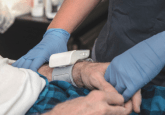FDA summarizes use of real-world evidence to support regulatory decision-making for drugs or biological products

The US FDA has released a new report on its website that summarizes submissions containing real-world data (RWD) used to generate real-world evidence (RWE) in support of regulatory decisions regarding the effectiveness or safety of drugs or biological products.
Following reauthorization of the Prescription Drug User Fee Act (PDUFA VII) in September 2022, the FDA pledged to provide aggregate and anonymized data on submissions to both the Center for Biologics Evaluation and Research (CBER) and the Center for Drug Evaluation and Research (CDER) that include RWE. The agency has now compiled a list of submissions to CBER and CDER made during 2023 that include analyses of RWD to support a drug or biological product effectiveness or safety.
To be included in the report, submissions must meet at least one criterion from each of the following categories:
- Type of regulatory submission – such as initial protocol submission, protocol amendment adding RWD, new drug application or final study report for a post-marketing requirement
- Role of the study – such as serving as an adequate and well-controlled study to support effectiveness, providing confirmatory evidence for approval based on a single adequate and well-controlled study or satisfying a post-marketing commitment
- Contribution of RWD – such as data for primary endpoint assessment, data for an external control arm, or safety data necessary product applications
The FDA’s compiled data for fiscal year 2023 (October 1, 2022, to September 30, 2023) shows that 10 submissions containing RWE were made to the CDER, primarily focusing on assessing product safety, while four were made to CBER. The regulatory purpose for each submission was to fulfill post-marketing requirements or commitments. The RWD sources included electronic health records (EHR), medical claims, and registries, with all studies being non-interventional (observational).
For CDER, submissions in an original or supplemental new drug application or biologics license application included three studies supporting effectiveness and one for safety. The types of studies were one randomized controlled trial, two externally controlled trials, and one non-interventional study.
Additionally, the FDA noted two NDA/BLA approvals based, at least in part, on RWE. One approval was for a new dosing schedule for lacosamide (Vimpat; UCB), supported by a retrospective cohort study using EHR data. The second approval was for tocilizumab (Actemra; Genentech) for treating COVID-19 in hospitalized adults, based on evidence from several studies, including the RECOVERY trial.
The FDA notes it will continue to report on the use of RWE in regulatory submissions, providing transparency and insights into how RWD is utilized to support the safety and effectiveness of drugs and biological products. This ongoing reporting aims to enhance understanding and confidence in the integration of RWE in regulatory decision-making processes.
Want regular updates on the latest real-world evidence news straight to your inbox? Become a member on The Evidence Base® today>>>






